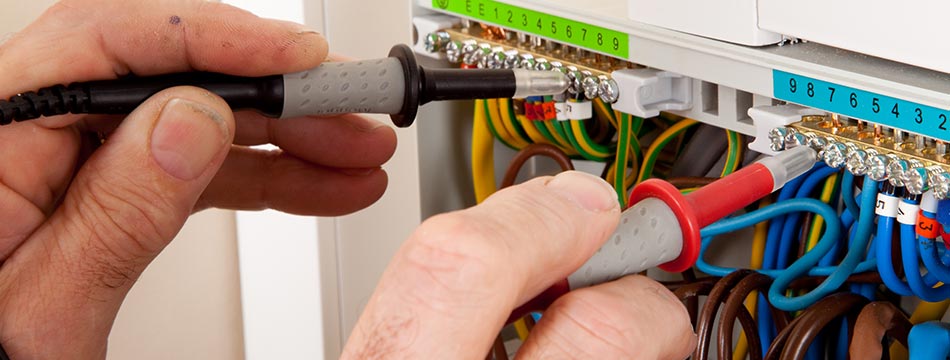
Fixed wire testing may only have to be legally completed every five years, but this is an approach that is no longer recommended by the IET.
Five yearly fixed-wire testing is a legal procedure for organisations to ensure that all electrical equipment is safe for human use, but this process could leave electrical components as a danger in the time between tests, potentially causing accidents in the workplace.
The process of completing periodic testing usually means all electrical testing is done on a site every five years, testing all electrical installations for efficiency and flagging up any dangers that should be rectified. Instead of this, many firms now also opt to complete fixed wire testing in instances of 20% over the five yearly period, bringing in contractors to assess the building systematically over the next half-decade.
This new approach to fixed wire testing comes as a result of recent amendments to the IEE's wiring regulations, which states that electrical installations should not be left for five years as was previously the case. Instead the procedure generally involves completing an annual visual check of electrical installations for damage that may have happened over the year, while the aforementioned 20% physical check is also adopted by many organisations as well.
There are still a large amount of organisations out there that still complete the fixed wire testing on a five-yearly basis though, so it is important to know that under the new regulations this procedure is putting your business and staff at risk.
In addition to the regulations set by the IET, it is also important to consider the type of environment that requires the testing. Certain public areas that raise a massive hazard if electrical appliances aren’t working correctly such as swimming pools must be tested much more frequently than other areas, so it is always worth researching which environment needs the testing and how soon it should be completed.
It’s also worth noting that the qualified professional carrying out the tests can do the following:
- Flag up any dangerous installations for repairs
- Decrease/increase the amount of time before the next inspection based on findings
Any testing done on site must be done by a qualified professional, but the frequency and amount of testing completed is ultimately up to the organisation carrying out the testing.
Fixed wire testing may only have to be legally completed every five years, but this is an approach that is no longer recommended by the IET.
Five yearly fixed-wire testing is a legal procedure for organisations to ensure that all electrical equipment is safe for human use, but this process could leave electrical components as a danger in the time between tests, potentially causing accidents in the workplace.
The process of completing periodic testing usually means all electrical testing is done on a site every five years, testing all electrical installations for efficiency and flagging up any dangers that should be rectified. Instead of this, many firms now also opt to complete fixed wire testing in instances of 20% over the five yearly period, bringing in contractors to assess the building systematically over the next half-decade.
This new approach to fixed wire testing comes as a result of recent amendments to the IEE's wiring regulations, which states that electrical installations should not be left for five years as was previously the case. Instead the procedure generally involves completing an annual visual check of electrical installations for damage that may have happened over the year, while the aforementioned 20% physical check is also adopted by many organisations as well.
There are still a large amount of organisations out there that still complete the fixed wire testing on a five-yearly basis though, so it is important to know that under the new regulations this procedure is putting your business and staff at risk.
In addition to the regulations set by the IET, it is also important to consider the type of environment that requires the testing. Certain public areas that raise a massive hazard if electrical appliances aren’t working correctly such as swimming pools must be tested much more frequently than other areas, so it is always worth researching which environment needs the testing and how soon it should be completed.
It’s also worth noting that the qualified professional carrying out the tests can do the following:
- Flag up any dangerous installations for repairs
- Decrease/increase the amount of time before the next inspection based on findings
Any testing done on site must be done by a qualified professional, but the frequency and amount of testing completed is ultimately up to the organisation carrying out the testing.
Written by Bill Earlie at www.tester.co.uk


